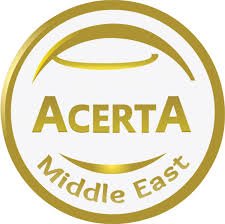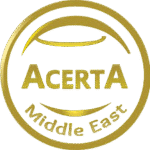
In industries such as oil and gas, chemicals, and manufacturing, where flammable gases, vapors, or dusts are present, the risk of fire or explosion is a constant concern. Hazardous Area Classification (HAC) is a systematic process that identifies and categorizes areas where these hazards exist, enabling facilities to implement controls to prevent ignition and ensure safety. By defining zones based on the likelihood and nature of hazardous substances, HAC guides the selection of equipment, procedures, and safety measures. This article explores the principles, methodology, and practical applications of Hazardous Area Classification, with insights into how Cormat Group excels in managing these risks to protect workers, assets, and the environment.
Hazardous Area Classification (HAC) is a method used to assess and categorize areas within a facility where flammable gases, vapors, liquids, or combustible dusts may create a risk of fire or explosion. It involves identifying the presence of hazardous substances, evaluating the likelihood of their release, and defining zones based on the risk level. These zones determine the safety requirements for equipment, electrical installations, and operational procedures to prevent ignition sources.
HAC is a cornerstone of safety management in industries regulated by standards like the UK’s Control of Major Accident Hazards (COMAH), ATEX directives in Europe, or IEC 60079 globally. For example, in a refinery, HAC might classify a pump room handling flammable liquids as a high-risk zone, requiring spark-proof equipment. The goal is to reduce risks to As Low As Reasonably Practicable (ALARP) by ensuring safety measures match the hazard level.
HAC is critical for several reasons, making it an essential tool in high-hazard industries:
A 2023 report by the Health and Safety Executive (HSE) found that facilities with thorough HAC processes reduced fire and explosion incidents by 35%, underscoring its importance in safety management.
HAC is built on several core elements that together create a comprehensive safety framework:
This involves listing all flammable gases, vapors, liquids, or combustible dusts present in the facility, such as methane, gasoline, or coal dust. Material Safety Data Sheets (MSDS) provide critical data on their properties.
Areas are classified into zones based on the likelihood and duration of a hazardous atmosphere:
Identify potential ignition sources, such as electrical equipment, hot surfaces, or static electricity, and evaluate their presence in hazardous areas.
Implement controls to prevent ignition, such as:
Select equipment certified for use in specific zones, adhering to standards like ATEX or IEC 60079. For example, Zone 0 requires equipment with the highest level of protection.
Create detailed HAC drawings and reports, showing classified zones, hazardous substances, and control measures. These documents support regulatory compliance and safety audits.
Demonstrate that risks are reduced to ALARP by balancing the cost of additional controls against the safety benefits achieved.
Conducting HAC requires a structured, data-driven approach that integrates technical expertise and stakeholder collaboration. Here’s a step-by-step guide:
Collect information about the facility’s operations, including:
List all flammable or combustible materials, noting their properties, such as flash point, auto-ignition temperature, or explosibility. For example, a chemical plant might identify benzene as a flammable liquid.
Evaluate potential release scenarios, such as:
Assign zones based on the likelihood and duration of a hazardous atmosphere, using standards like IEC 60079 or NFPA 70. For example:
List potential ignition sources, such as:
Apply controls to eliminate or minimize ignition risks, such as:
Choose equipment certified for specific zones, adhering to standards like ATEX or IECEx. For example, Zone 0 requires equipment with “ia” protection (intrinsically safe), while Zone 2 might use “nA” (non-sparking) equipment.
Show that risks are reduced to ALARP by:
Develop detailed HAC documentation, including:
Involve employees, safety teams, and regulators in the HAC process. Conduct workshops or reviews to validate zone classifications and controls. Cormat Group engages stakeholders to ensure their HAC processes are comprehensive and practical.
Implement HAC controls, such as installing certified equipment or updating procedures. Train personnel on:
Regularly review the HAC to reflect changes in operations, substances, or regulations. Conduct inspections and audits to verify controls, updating zone classifications as needed. Schedule reviews every few years or after significant changes, like new processes or equipment.
HAC faces several challenges:
Technology enhances the accuracy and efficiency of HAC:
Cormat Group leverages these technologies to streamline their HAC processes, ensuring safe and compliant operations.
Hazardous Area Classification is a vital tool for managing fire and explosion risks in high-hazard industries. By identifying hazardous substances, classifying zones, and implementing controls, HAC ensures safe operations, protects lives, and meets regulatory requirements. Cormat Group demonstrates how a rigorous HAC process drives safety excellence, minimizing risks in complex environments. Despite challenges like data limitations and dynamic operations, technology, stakeholder collaboration, and regular reviews can overcome them. As industries evolve, HAC will remain essential for building safer, more resilient workplaces, safeguarding personnel, assets, and the environment.
Please get in touch with our specialist.
Sultan International Tower
P.O. Box 41233,
Abu Dhabi, U.A.E.
Landline: +971 2 622 3535 Ext: 303
Cormat-Al Bunyan Vision Contracting
131 street, Al Muruj, Abha, KSA

Building 2,
Guildford Business
Park Road, Guildford.
Surrey. UK. GU2 8XG.
Sultan International Tower
P.O. Box 41233,
Abu Dhabi, U.A.E.
Landline: +971 2 622 3535 Ext: 303
Cormat-Al Bunyan Vision Contracting
131 street, Al Muruj, Abha, KSA

Copyright 2025 Cormat Group | All Rights Reserved | Certified